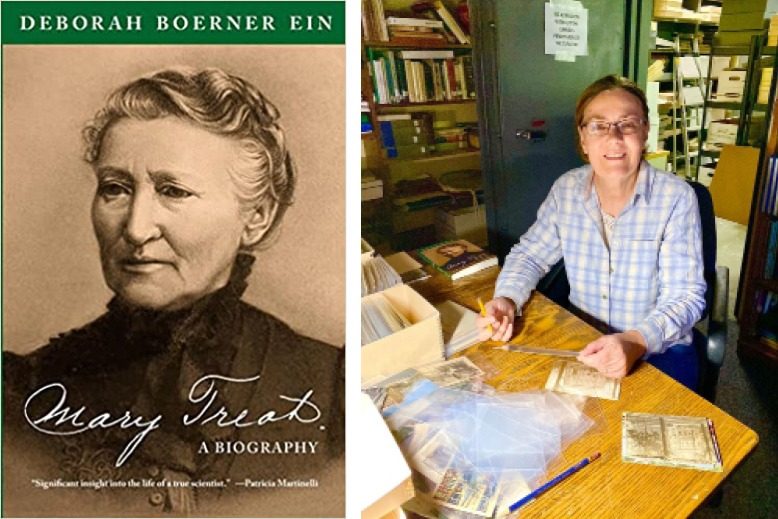
Working as a naturalist primarily from her Vineland home, Mary Treat was a groundbreaking scientist who discovered new flora and fauna, including three species of ants that were named in her honor, and was praised by Charles Darwin for her work. Treat has also inspired modern-day writers, appearing as a character in Barbara Kingsolver’s novel Unsheltered and inspiring a character in The Signature of All Things by Elizabeth Gilbert.
While Treat wrote six books and more than 100 scientific articles, her achievements have mostly receded into the background since her death in 1923—until now. Deborah Boerner Ein takes the trailblazing scientist out of the historical shadows with Mary Treat: A Biography (Lulu), the first book-length account of her life. For Ein, a Hammonton resident who spent four years researching and writing, a Treat biography was overdue.
“So many women who contributed to science, art and other disciplines have gone unnoticed or were not given the recognition they deserve,” says Ein, editor of SNJ Today, a weekly newspaper in Vineland.
Born in 1830, Treat studied botany in school and became an advocate of the sciences. The “study of botany,” she noted in an 1866 article, “raises woman above the frivolities of dress and fashion.”
Treat, who lived in Vineland from 1868 to 1919, specialized in the study of carnivorous plants, such as the Venus flytrap, and branched out into entomology. Charles Darwin praised her findings and acknowledged that “I am much indebted to Mrs. Treat” in one of his books.
“Darwin corresponded with Mary Treat more than any other woman scientist,” Ein says. “There are 15 known letters that passed between the two of them.”
Treat took advantage of the biological diversity in her backyard and surrounding region. “Vineland and South Jersey were a tremendous influence on her,” Ein says, adding that Treat traveled to Batsto and Atsion in the Pine Barrens to complete her studies on carnivorous plants.
Ein hopes her book ensures that Treat’s contributions will be remembered.
“She forged a wider path for women to follow their interests and passions,” Ein notes, “and laid the groundwork for later generations of ecologists to further explore and understand how all living things are interconnected in nature.”
No one knows New Jersey like we do. Sign up for one of our free newsletters here. Want a print magazine mailed to you? Purchase an issue from our online store.
